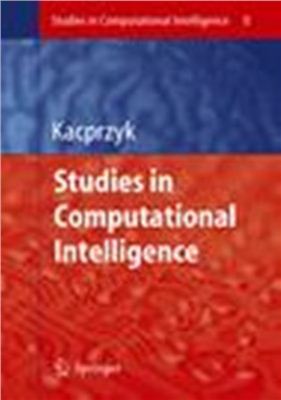Издательство Springer, 2008, -256 pp.
The objective of Document Analysis and Recognition (DAR) is to recognize the text and graphical components of a document and to extract information. With first papers dating back to the 1960’s, DAR is a mature but still growing research field with consolidated and known techniques. Optical Character Recognition (OCR) engines are some of the most widely recognized products of the research in this field, while broader DAR techniques are nowadays studied and applied to other industrial and office automation systems.
In the machine leaing community, one of the most widely known research problems addressed in DAR is recognition of unconstrained handwritten characters which has been frequently used in the past as a benchmark for evaluating machine leaing algorithms, especially supervised classifiers.
However, developing a DAR system is a complex engineering task that involves the integration of multiple techniques into an organic framework. A reader may feel that the use of machine leaing algorithms is not appropriate for other DAR tasks than character recognition. On the contrary, such algorithms have been massively used for nearly all the tasks in DAR. With large emphasis being devoted to character recognition and word recognition, other tasks such as pre-processing, layout analysis, character segmentation, and signature verification have also benefited much from machine leaing algorithms.
This book is a collection of research papers and state-of-the-art reviews by leading researchers all over the world including pointers to challenges and opportunities for future research directions. The main goals of the book are identification of good practices for the use of leaing strategies in DAR, identification of DAR tasks more appropriate for these techniques, and highlighting new leaing algorithms that may be successfully applied to DAR.
Depending on reader’s interests, there are several paths that can be followed when reading the chapters of the book. We therefore avoided grouping the chapters into sections; instead we provide a deep introduction to the field and to the book’s contents in the first chapter.
It is our hope that this book will help readers identify the current status of the use of machine leaing techniques in DAR. Moreover, we expect that it can contribute to stimulate new ideas, new collaborations and new research activities in this research arena.
Introduction to Document Analysis and Recognition
Structure Extraction in Printed Documents Using Neural Approaches
Machine Leaing for Reading Order Detection in Document Image Understanding
Decision-Based Specification and Comparison of Table Recognition Algorithms
Machine Leaing for Digital Document Processing: from Layout Analysis to Metadata Extraction
Classification and Leaing Methods for Character Recognition: Advances and Remaining Problems
Combining Classifiers with Informational Confidence
Self-Organizing Maps for Clustering in Document Image Analysis
Adaptive and Interactive Approaches to Document Analysis
Cursive Character Segmentation Using Neural Network Techniques
Multiple Hypotheses Document Analysis
Leaing Matching Score Dependencies for Classifier Combination
Perturbation Models for Generating Synthetic Training Data in Handwriting Recognition
Review of Classifier Combination Methods
Machine Leaing for Signature Verification
Off-line Writer Identification and Verification Using Gaussian Mixture Models
The objective of Document Analysis and Recognition (DAR) is to recognize the text and graphical components of a document and to extract information. With first papers dating back to the 1960’s, DAR is a mature but still growing research field with consolidated and known techniques. Optical Character Recognition (OCR) engines are some of the most widely recognized products of the research in this field, while broader DAR techniques are nowadays studied and applied to other industrial and office automation systems.
In the machine leaing community, one of the most widely known research problems addressed in DAR is recognition of unconstrained handwritten characters which has been frequently used in the past as a benchmark for evaluating machine leaing algorithms, especially supervised classifiers.
However, developing a DAR system is a complex engineering task that involves the integration of multiple techniques into an organic framework. A reader may feel that the use of machine leaing algorithms is not appropriate for other DAR tasks than character recognition. On the contrary, such algorithms have been massively used for nearly all the tasks in DAR. With large emphasis being devoted to character recognition and word recognition, other tasks such as pre-processing, layout analysis, character segmentation, and signature verification have also benefited much from machine leaing algorithms.
This book is a collection of research papers and state-of-the-art reviews by leading researchers all over the world including pointers to challenges and opportunities for future research directions. The main goals of the book are identification of good practices for the use of leaing strategies in DAR, identification of DAR tasks more appropriate for these techniques, and highlighting new leaing algorithms that may be successfully applied to DAR.
Depending on reader’s interests, there are several paths that can be followed when reading the chapters of the book. We therefore avoided grouping the chapters into sections; instead we provide a deep introduction to the field and to the book’s contents in the first chapter.
It is our hope that this book will help readers identify the current status of the use of machine leaing techniques in DAR. Moreover, we expect that it can contribute to stimulate new ideas, new collaborations and new research activities in this research arena.
Introduction to Document Analysis and Recognition
Structure Extraction in Printed Documents Using Neural Approaches
Machine Leaing for Reading Order Detection in Document Image Understanding
Decision-Based Specification and Comparison of Table Recognition Algorithms
Machine Leaing for Digital Document Processing: from Layout Analysis to Metadata Extraction
Classification and Leaing Methods for Character Recognition: Advances and Remaining Problems
Combining Classifiers with Informational Confidence
Self-Organizing Maps for Clustering in Document Image Analysis
Adaptive and Interactive Approaches to Document Analysis
Cursive Character Segmentation Using Neural Network Techniques
Multiple Hypotheses Document Analysis
Leaing Matching Score Dependencies for Classifier Combination
Perturbation Models for Generating Synthetic Training Data in Handwriting Recognition
Review of Classifier Combination Methods
Machine Leaing for Signature Verification
Off-line Writer Identification and Verification Using Gaussian Mixture Models

